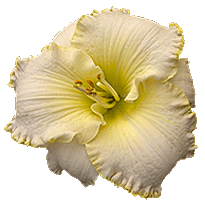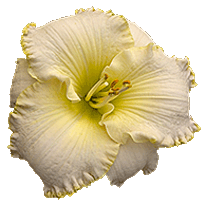




Before entering our daylily gallery, you might want to read these short notes on the features and functions of the gallery itself as well as color management in images posted on the web. If not, or if you have already read them, click on any of the "To Our Daylilies: Enter Here" buttons on this page.
GALLERY FEATURES:
This gallery has several interactive features to enhance your viewing experience.
As a "guest" visitor (i.e. an unregistered user), you can:
1/ view all images and display them in medium and large sizes
2/ send an ecard to a friend using any image you choose for that card and entering a message in the ecard as well
3/ email a link to the gallery to a friend.
4/ use our gallery's searchable database to locate various information about the daylilies shown there
As a registered user there are even more features available to you. You can:
1/ view the images within any category as a slide show
2/ subscribe to the gallery to receive email notices of all updates
3/ create your own "favorites" category by selecting "add to my favorites" icon located at the bottom of each image. You can add/remove images from your "favorites," a great way to build a "wish list," or make selections that you might like to purchase..
If you would like to register as a user, but wish to remain anonymous, simply choose a user name that does not reveal who you are. Register Now !
We hope you will register to take full advantage of these features, especially the ratings and comments; we would love to have your feedback on our seedlings.
DAYLILY COLOR:
On this web site, the color in the daylily images as posted is "spot-on."
These images have been meticulously and painstakingly color managed, not color enhanced, from point-of-capture to point-of-posting, ensuring that they accurately and uniformly represent the colors of the daylilies as they appear in our gardens. If you view some of the alternate images of our introductions, you may note that there is some slight variation of color among them. This is perfectly normal since depending up natural factors such as time of day, sunshine, shade, or cloudiness the colors in any object, not just daylilies, will appear slightly differently. For example, early morning sun makes colors appear "warmer;" late afternoon sun makes them appear "cooler."
As with all images posted on the web or sent via email, whether or not you are able to view the true color depends upon various aspects of your computer, your monitor, your web-browser and/or your image viewer.
Color management in photography has been around in various forms since the earliest days of color photography. With film cameras, color was managed via specific films for specific lighting situations (outdoor film for sunlight, indoor film for tungsten or florescent lighting, etc.), and/or filters placed over the lens of the camera. During processing, color was further managed either automatically when processed in bulk, or manually by "custom" labs. Always there was a need to manage the color in an attempt to make the images more realistically reflect the color of the actual subject being photographed.
Volumes have been written about the absolute necessity of managing color in digital images. The bottom line is that virtually all digital images from whatever camera, no matter its quality, require slight "tweaks" to correct for such things as white balance and color casts, just as was necessary with film. The only difference is that today with digital photography and computers and various software applications, virtually anyone can have his own computer darkroom and can make a virtually infinite number of changes to the color of an image. Unfortunately, this often results in images whose color bears little or no resemblance to reality.
To manage the color in an image so that it approximates as nearly as possible the color of the subject being photographed requires experience, training, practice, and special equipment.

| Home Page | Daylily Cultivation Article Index |
| Information Center | Site Map | Offsite Links |
Internet Explorer 5+
Mozilla Firefox 2+
(You can download either of the browsers listed above by clicking on their name link)






